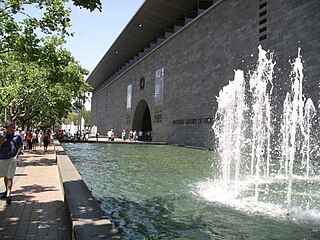
The National Gallery of Victoria, popularly known as the NGV, is an art museum in Melbourne, Victoria, Australia. Founded in 1861, it is Australia's oldest and most visited art museum.
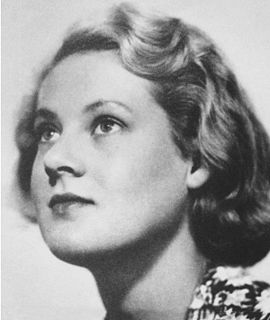
Joy St Clair Hester was an Australian artist. She was a member of the Angry Penguins movement and the Heide Circle who played an integral role in the development of Australian Modernism. Hester is best known for her bold and expressive ink drawings. Her work was charged with a heightened awareness of mortality due to the death of her father during her childhood, the threat of war, and her personal experience with Hodgkin's Disease. Hester is most well known for the series Face, Sleep, and Love (1948–49) as well as the later works, The Lovers (1956–58).
Elizabeth Ann Dewar Churcher was an Australian arts administrator, best known as director of the National Gallery of Australia from 1990 to 1997. She was also a painter in her own right earlier in her life.
Minnie Pwerle was an Australian Aboriginal artist. She came from Utopia, Northern Territory, a cattle station in the Sandover area of Central Australia 300 kilometres (190 mi) northeast of Alice Springs.

Clarice Marjoribanks Beckett was an Australian artist and a key member of the Australian tonalist movement. Her works are featured in the collections of Australia's major public galleries, including the National Gallery of Australia, National Gallery of Victoria and the Art Gallery of South Australia.
Fiona Margaret Hall, AO is an Australian artistic photographer and sculptor. Hall represented Australia in the 56th International Art Exhibition at the Venice Biennale in 2015. She is known as "one of Australia's most consistently innovative contemporary artists." Many of her works explore the "intersection of environment, politics and exploitation".
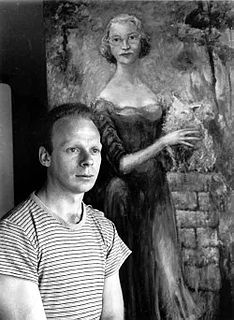
Peter Benjamin Graham, was an Australian visual artist, printer, and art theorist.
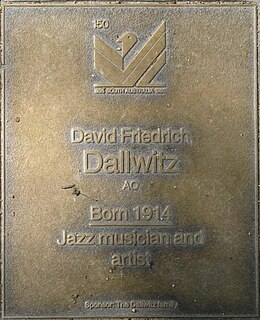
David Friedrich Dallwitz was a South Australian jazz and classical musician, bandleader, composer, painter, and art teacher whose work spanned almost seven decades. He led jazz, Dixieland, and ragtime bands, and performed with classical chamber music groups.
Aubrey Hickes Lawson Gibson was an Australian businessman, arts patron and art collector. Born and educated in Melbourne, Gibson became a successful businessman in the city, establishing his own company, A.H. Gibson Industries, which was listed on the stock exchange in the 1950s. He was also a director of other major manufacturers and distributors, including Volkswagen Australasia and Hoover Australia.
Desiderius Orban, was a renowned Hungarian painter, printmaker and teacher, who, after emigrating to Australia in 1939 when in his mid-50s, also made an illustrious career in that country.

Makinti Napanangka was a Pintupi-speaking Indigenous Australian artist from Australia's Western Desert region. She was referred to posthumously as Kumentje. The term Kumentje was used instead of her personal name as it is customary among many indigenous communities not to refer to deceased people by their original given names for some time after their deaths. She lived in the communities of Haasts Bluff, Papunya, and later at Kintore, about 50 kilometres (31 mi) north-east of the Lake MacDonald region where she was born, on the border of the Northern Territory and Western Australia.
Rosella Namok is an Indigenous Australian artist from Lockhart River, Queensland. Namok was taught art at high school and learned printmaking and other techniques through a community art project in 1997 that led to the formation of a group of artists known as the Lockhart River Art Gang.
Contemporary Indigenous Australian art is the modern art work produced by Indigenous Australians, that is, Aboriginal Australians and Torres Strait Islander people. It is generally regarded as beginning in 1971 with a painting movement that started at Papunya, northwest of Alice Springs, Northern Territory, involving Aboriginal artists such as Clifford Possum Tjapaltjarri and Kaapa Tjampitjinpa, and facilitated by white Australian teacher and art worker Geoffrey Bardon. The movement spawned widespread interest across rural and remote Aboriginal Australia in creating art, while contemporary Indigenous art of a different nature also emerged in urban centres; together they have become central to Australian art. Indigenous art centres have fostered the emergence of the contemporary art movement, and as of 2010 were estimated to represent over 5000 artists, mostly in Australia's north and west.
The Contemporary Art Centre of South Australia (CACSA), formerly Contemporary Art Society (CAS), was an art museum and art space located in the Adelaide suburb of Parkside, in South Australia. In late 2016 it merged with the Australian Experimental Art Foundation to form ACE Open.

Constance Stokes was a modernist Australian painter who worked in Victoria. She trained at the National Gallery of Victoria Art School until 1929, winning a scholarship to continue her study at London's Royal Academy of Arts. Although Stokes painted few works in the 1930s, her paintings and drawings were exhibited from the 1940s onwards. She was one of only two women, and two Victorians, included in a major exhibition of twelve Australian artists that travelled to Canada, the United Kingdom and Italy in the early 1950s.
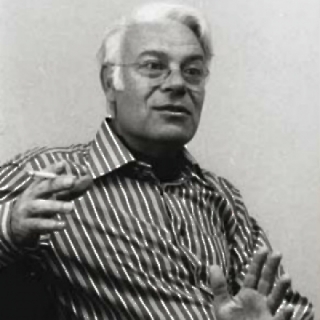
Udo Sellbach (1927–2006) was a German-Australian visual artist and educator whose work focused primarily around his printmaking practice.
Ivor Pengelly Francis was an artist and art critic and teacher in South Australia. He has been called South Australia's premier surrealist painter.

The Royal Queensland Art Society is an organisation for practicing artists and those who appreciate art in Queensland, Australia. It is the oldest art society in Queensland.

ACE Open is a contemporary visual art organisation based in Adelaide, South Australia, established in 2017 after the Contemporary Art Centre of South Australia and the Australian Experimental Art Foundation (AEAF) were merged, creating a new organisation.
Sally Smart is an Australian contemporary artist known for her large-scale assemblage installations that incorporate a range of media, including felt cut-outs, painted canvas, drawings, screen-printing, printed fabric and photography, performance and video. Her art addresses gender and identity politics and questions the relationships between body and culture, including trans-national ideas that shaped cultural history. She has exhibited widely throughout Australia and internationally, and her works are held in major galleries in Australia and around the world.










